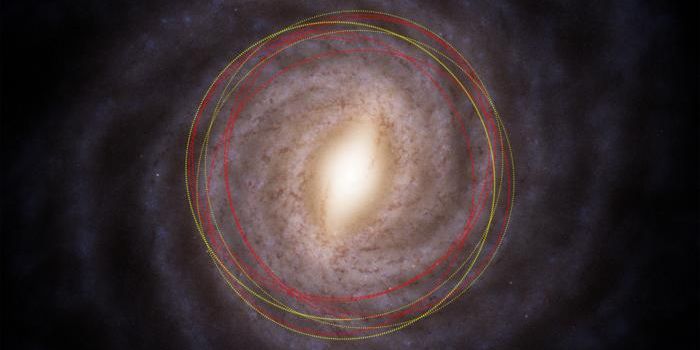"Stellar Feedback" Limits Star Formation
In a new study published in The Astrophysical Journal, astronomers have detailed how groups of stars can regulate their formation. Stars form in groups – or clusters – out of dense clouds of gas and dust. Astronomers have found that a limited number of stars can form in these clouds.
The biggest and brightest stars that form in the cluster will blow away most of the remaining gas and dust in the cloud with their strong stellar winds, getting rid of the raw material needed to form stars. This process suppresses star formation in that region and is called “stellar feedback.”
In the paper, astronomers studied RCW 36 to better understand the role stellar feedback plays in the star formation process. RCW 36 is an HII region – a large cloud of gas that is mainly composed of ionized hydrogen atoms, or hydrogen that has been stripped of its electrons – located approximately 2,900 light-years from Earth. In this region, there is a cluster of stars that have recently formed.
The image below has been created with data from NASA’s Chandra X-ray Observatory, NASA’s Stratospheric Observatory for Infrared Astronomy (SOFIA), the Atacama Pathfinder EXperiment telescope (APEX), and ESA’s Herschel telescope.
The image shows a cluster of young stars (seen as point sources) surrounded by a cloud of ionized hydrogen gas. There are two cavities carved out of the hydrogen gas that extend in opposite directions, and a ring of gas that wraps around the cluster of stars between the cavities (the cavities and ring are labeled in the image).
In the center of the image, there is hot gas (T = 2 million Kelvin or 3.6 million degrees Fahrenheit) heated by the hottest and most massive stars in the cluster. The ring surrounding this region contains cool, dense gas (T = 15-25 Kelvin or -430 to -410 degrees Fahrenheit) that is moving outwards, likely driven by the outward pressure from the hot gas inside the cavities, as well as radiation from the stars in the cluster.
Astronomers estimate that 170 Earth masses of matter is being expelled from the region each year. They estimate that most of the cool gas within about 3 light-years of this region will be ejected within 1-2 million years, which is comparable to the time it would take a star to form. Thus, “stellar feedback” will clear out the raw material needed to form stars, limiting the number of stars that will form in this region.
Source: nasa.gov









